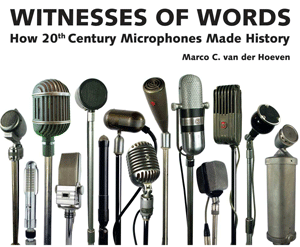|
Even with vintage microphones, modern reality can occasionally rear its ugly head.
That is certainly the case with this microphone of the month: the Oktava ML17 cardioid ribbon microphone.
I bought it from a Ukrainian musician who monetized it out of necessity.
I'm always curious about the past of a microphone, it turned out to have served in the Kharkiv train station, for announcements. A very humble role for a really professional studio product.
The microphone, although it looks battered, was saved in time, unlike the second largest Ukrainian city and the train station, which were largely destroyed by heavy Russian bombing. Careful repairs are now underway, while the guns are still roaring in the distance; noises of an uncertain future.
The microphone dates from 1962, a time when Ukraine was still part of the Soviet Union and the planned economy determined that most products were made centrally somewhere and then distributed throughout the empire. For almost all USSR microphones the producer was Oktava, since the late thirties.
The Russian Oktava factory, located in Tula, a town with a lot of heavy industry, about two hundred kilometers south of Moscow, had been making ribbon microphones since the 1950s, the first, the ML-10, was a clone of the American RCA 44BX, the second, the ML- 11, from 1956, was a copy of the RCA 77D, complete with adjustable directional patterns, but the ML-11M version was just fitted with a directional pick up pattern.
In the early sixties this was succeeded by the ML-17, which had a wider frequency range (ML-11m 70-10,000 Hz, ML-17 70-12,000 Hz), the extended frequency range is probably due to stronger magnets and a thinner aluminum ribbon.
The ML-17 is also similar in appearance to the RCA 77s and, unlike the shorter bidirectional ML-16, it has an acoustic labyrinth that shapes the cardioid recording pattern. Both types have a toroidal transformer in the lower part.
They were made until about the mid-seventies and were intended for radio, TV and film.
The sound is like that of the RCAs: warm and vintage, but absolutely good quality and therefore usable for studio recordings, so that the few remaining copies are used in both Eastern and Western studios for the recording of vocals and electric guitars, among other things. Several top Western artists recorded with these vintage comrades.
Many more types feature in my book Witnesses of Words. More information about that can be found at www.witnessesofwords.com

|
|
|
|
|
Above: the ML-17 front, side and the motor,
Below: sound, frequency chart and back of the ribbon with labyrinth entrance
|
|
|
|
|